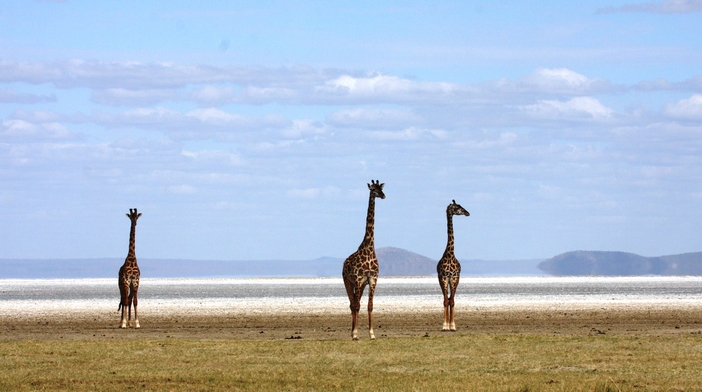Wild Nature Institute Giraffe Research Uses Big Data Tools
Part 3: Velocity, Volume, and Variety in Tall Data for Giraffe Conservation
Giraffes are big animals, so scientists have turned to big data solutions for giraffe conservation. Researchers from the Wild Nature Institute are conducting one of the largest-scale big mammal studies ever undertaken by studying births, deaths, and movements of more than 2,000 giraffes across a 4,000 square kilometer landscape in the Tarangire ecosystem of northern Tanzania, East Africa. Giraffe populations have declined precipitously across Africa due to habitat loss and illegal killing for meat. Dr. Derek Lee, Principal Scientist of the Wild Nature Institute said, “We needed new tools to figure out how we can save giraffes, and there was a perfect storm of technology that made our Project GIRAFFE work possible.”
Big data programs are often described by the 3 Vees of Velocity, Volume, and Variety, and Wild Nature Institute’s Project GIRAFFE is growing in all three. “Our Volume (amount of data) and Variety (type and nature of data) are already staggering.” said Dr. Lee. “We take about 9000 high-resolution photos every year, and these photos contain hundreds of gigabytes of data on giraffe identity, location, social relationships, age, size, reproductive status, disease, space and habitat use, and much more. Our Velocity recently increased in a huge step function as our computer science collaborators have developed amazing new tools to speed up data processing. We are always looking for more partners from the computer science, informatics, and cybernetics worlds to improve our information processing systems.”
Variety of data streams is also increasing as Wild Nature Institute enlists village game scouts, tourism operators, and ecotourists on safari. Involving stakeholders is integral to monitoring how giraffes respond to community conservation zones called Wildlife Management Areas. Wild Nature Institute partners at the PAMS Foundation are supporting intelligence-based anti-poaching activities to protect elephants and giraffes in the Tarangire ecosystem, and Wild Nature Institute is documenting how the wildlife populations respond to their efforts.
Wild Nature Institute scientists are using digital photographs of each giraffe’s unique and unchanging spot patterns to identify them throughout their lives. They are quantifying births, deaths, and movements of more than 2000 individual giraffes in a landscape that is a mosaic of natural and human-impacted areas to learn where giraffe are doing well, and where they are not, and why. Armed with data-driven conservation knowledge products, Wild Nature Institute scientists and partners are working to protect and connect the areas that are most important to giraffe survival and reproduction. “We are turning big data into tall data to save giraffes!” said Lee.
See also:
Part 1: Matching Photos of the Same Giraffe Using Virtual Supercomputers
Part 2: Machine Learning Finds the Giraffe in the Bushes

